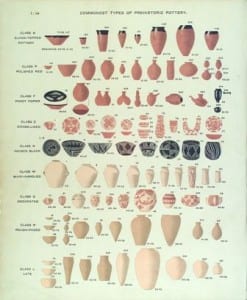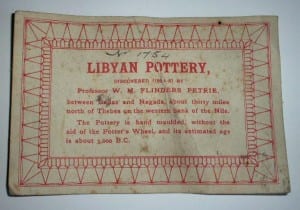Petrie Pottery Project Guest Blog: Reinventing the (Potter’s) Wheel
By Alice Stevenson, on 10 June 2014
Guest blog by Sarah Doherty
In the seventh in our series of thoughts about the Petrie pottery collction, Dr. Sarah K. Doherty, Ceramicist & Archaeologist for the Gurob Harem Palace Project, Fayoum and Gebel el Silsila Epigraphic Project, near Kom Ombo, Egypt, discusses some dinky little pots dating to the time of the earliest true Egyptian pyramids.
After you step through the doorway from the UCL’s Science Library into the Petrie Museum you would be forgiven for missing the little pots that I am going to tell you about in this blog. However, bear with me, pots UC17625, 17630, 17632, and 17631 in pottery case P16 may not look like much, but they hold the secret for a new technological revolution that was going on during Egypt’s Old Kingdom (c.2600 B.C.). Each of these miniature vessels is made of Nile Silt, they date to the 4th dynasty (2600-2450 B.C.) and come from the Old Kingdom pyramid site of Meydum (c. 100km south of Cairo). In fact, some of these vessels were part of the foundation deposit of the pyramid temple of Sneferu at Meydum; others are from similar deposits in the mastabas of his courtiers.
 Close
Close









